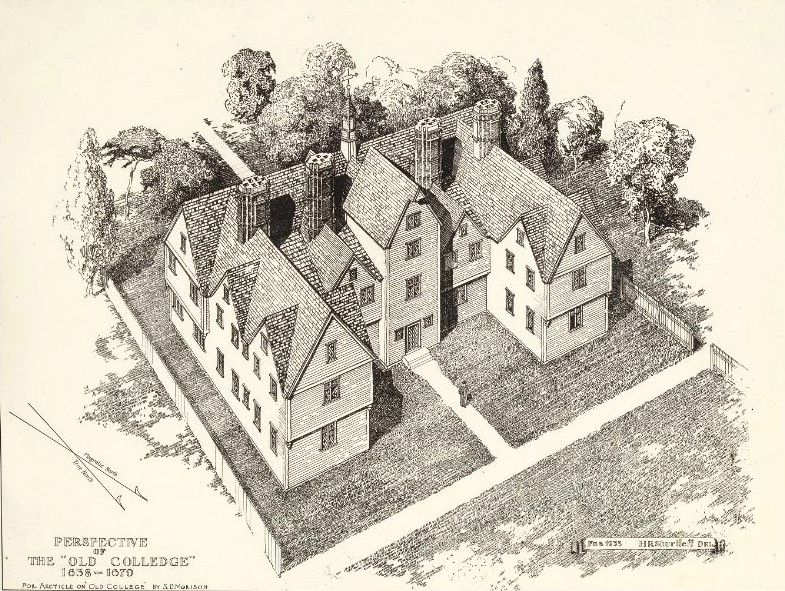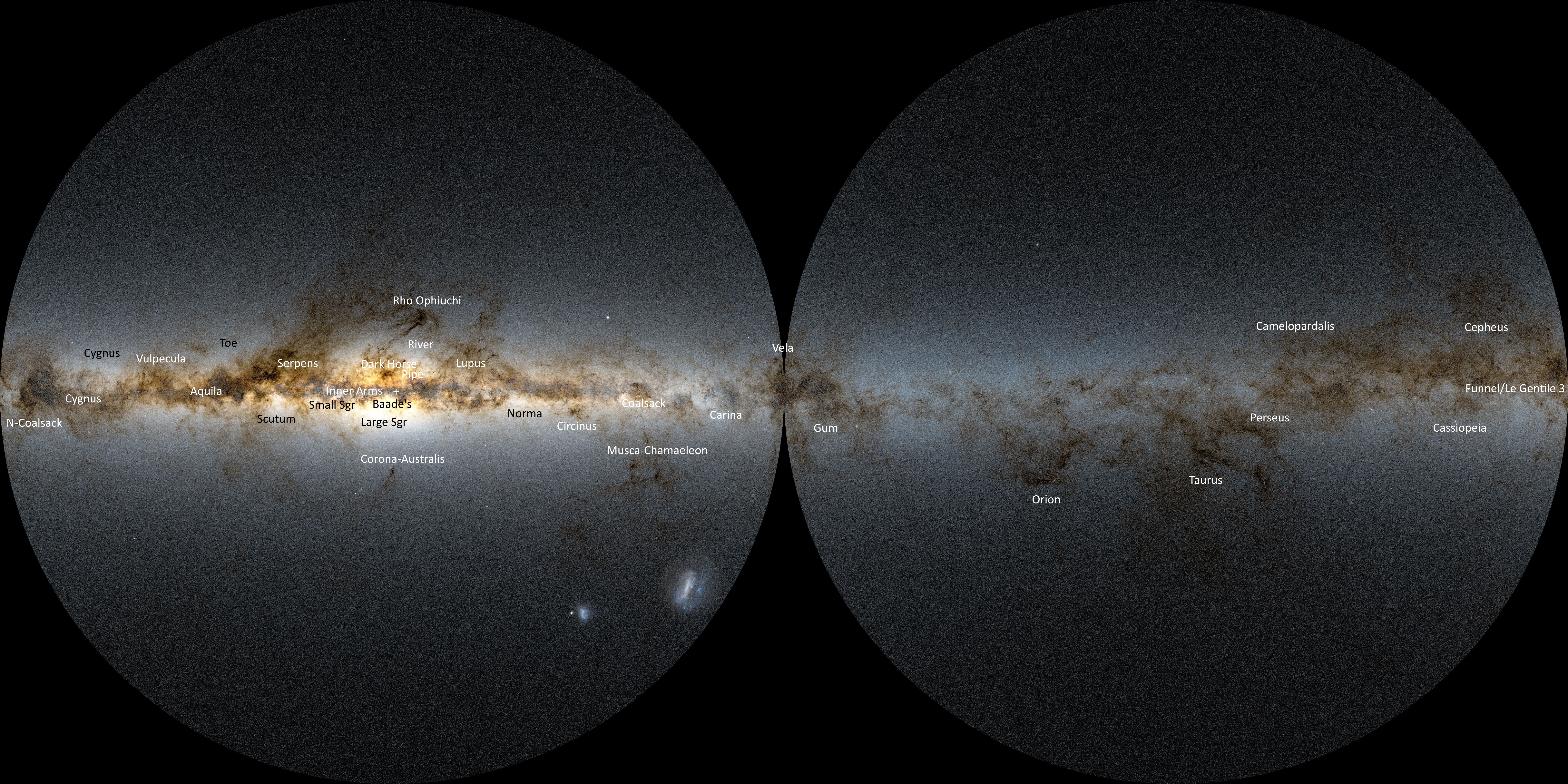|
Horsehead Nebula
The Horsehead Nebula (also known as Barnard 33) is a small dark nebula in the constellation Orion. The nebula is located just to the south of Alnitak, the easternmost star of Orion's Belt, and is part of the much larger Orion molecular cloud complex. It appears within the southern region of the dense dust cloud known as Lynds 1630, along the edge of the much larger, active star-forming H II region called IC 434. The Horsehead Nebula is approximately 422 parsecs or 1,375 light-years from Earth. It is one of the most identifiable nebulae because of its resemblance to a horse's head. History The nebula was first recorded in 1888 by Scottish astronomer Williamina Fleming on a photographic plate taken at the Harvard College Observatory. One of the first descriptions was made by E. E. Barnard, describing it as: "Dark mass, diam. 4′, on nebulous strip extending south from ζ Orionis", cataloguing the dark nebula as Barnard 33. Structure The dark cloud of dust and gas is a reg ... [...More Info...] [...Related Items...] OR: [Wikipedia] [Google] [Baidu] |
Barnard 33
''033'' or ''Zero Three Three'' is a 2010 Bengali film directed by Birsa Dasgupta in a directorial debut and produced by Moxie Entertainments. It stars Rudranil Ghosh and Parambrato Chattopadhyay. 033 is the STD code for Kolkata city, and the story is based on the theme of increasing youth migration outside Kolkata for career opportunities. Cast * Parambrato Chattopadhyay as Som, lead guitarist * Swastika Mukherjee as Mrinalini, NRI * Mumtaz Sorcar as Ria, vocalist * Sabyasachi Chakraborty as Santiago * Dhruv Mukherjee as Voodoo, drummer * Rudranil Ghosh as Rudra, keyboardist * Saheb Chatterjee * Madhabi Mukherjee Soundtrack The soundtrack's music director is Chandrabindoo (band) and the lyrics are penned by Srijato Srijato Bandopadhyay is an Indian poet of the Bengali language. He won the Ananda Puroskar in 2004 for his book ''Udanta Sawb Joker: All Those Flying Jokers''. In 2014, he won the Filmfare Awards East for Best Lyricist for the song 'Balir Sho .... Re ... [...More Info...] [...Related Items...] OR: [Wikipedia] [Google] [Baidu] |
Harvard College
Harvard College is the undergraduate college of Harvard University, an Ivy League research university in Cambridge, Massachusetts. Founded in 1636, Harvard College is the original school of Harvard University, the oldest institution of higher learning in the United States and among the most prestigious in the world. Part of the Faculty of Arts and Sciences, Harvard College is Harvard University's traditional undergraduate program, offering AB and SB degrees. It is highly selective, with fewer than five percent of applicants being offered admission in recent years. Harvard College students participate in more than 450 extracurricular organizations and nearly all live on campus—first-year students in or near Harvard Yard, and upperclass students in community-oriented "houses". History The school came into existence in 1636 by vote of the Great and General Court of the Massachusetts Bay Colony—though without a single building, instructor, or student. In 1638, the colleg ... [...More Info...] [...Related Items...] OR: [Wikipedia] [Google] [Baidu] |
Dark Nebulae
A dark nebula or absorption nebula is a type of interstellar cloud, particularly molecular clouds, that is so dense that it obscures the visible wavelengths of light from objects behind it, such as background stars and emission or reflection nebulae. The extinction of the light is caused by interstellar dust grains located in the coldest, densest parts of molecular clouds. Clusters and large complexes of dark nebulae are associated with Giant Molecular Clouds. Isolated small dark nebulae are called Bok globules. Like other interstellar dust or material, things it obscures are only visible using radio waves in radio astronomy or infrared in infrared astronomy. Dark clouds appear so because of sub-micrometre-sized dust particles, coated with frozen carbon monoxide and nitrogen, which effectively block the passage of light at visible wavelengths. Also present are molecular hydrogen, atomic helium, C18O (CO with oxygen as the 18O isotope), CS, NH3 (ammonia), H2CO (formaldehyde), c-C3 ... [...More Info...] [...Related Items...] OR: [Wikipedia] [Google] [Baidu] |
Horsehead Nebula
The Horsehead Nebula (also known as Barnard 33) is a small dark nebula in the constellation Orion. The nebula is located just to the south of Alnitak, the easternmost star of Orion's Belt, and is part of the much larger Orion molecular cloud complex. It appears within the southern region of the dense dust cloud known as Lynds 1630, along the edge of the much larger, active star-forming H II region called IC 434. The Horsehead Nebula is approximately 422 parsecs or 1,375 light-years from Earth. It is one of the most identifiable nebulae because of its resemblance to a horse's head. History The nebula was first recorded in 1888 by Scottish astronomer Williamina Fleming on a photographic plate taken at the Harvard College Observatory. One of the first descriptions was made by E. E. Barnard, describing it as: "Dark mass, diam. 4′, on nebulous strip extending south from ζ Orionis", cataloguing the dark nebula as Barnard 33. Structure The dark cloud of dust and gas is a reg ... [...More Info...] [...Related Items...] OR: [Wikipedia] [Google] [Baidu] |
List Of Hubble Anniversary Images
This is a list of images released to celebrate the Hubble Space Telescope's anniversaries. They celebrate its "birthday" when it was launched into orbit on April 24, 1990, by the crew of Space Shuttle ''Discovery''. 15th (2005) The 15th anniversary, in 2005, was celebrated with a collection of images of M51 (the Whirlpool Galaxy), and also with a section of the Eagle nebula. The 15th anniversary included a collection of other content including, in multiple languages, the video release, ''Hubble — 15 Years of Discovery''. 17th (2007) The 17th-anniversary celebration featured a panorama of part of the Carina Nebula, and a collection of images selected from that area. 18th (2008) 59 images of merging galaxies were released for the 18th anniversary on 24 April 2008. 19th (2009) 20th (2010) 21st (2011) 22nd (2012) 23rd (2013) 24th (2014) 25th (2015) 26th (2016) 27th (2017) 28th (2018) 29th (2019) In April 2019, a special celebration image of ... [...More Info...] [...Related Items...] OR: [Wikipedia] [Google] [Baidu] |
Hubble Space Telescope
The Hubble Space Telescope (often referred to as HST or Hubble) is a space telescope that was launched into low Earth orbit in 1990 and remains in operation. It was not the first space telescope, but it is one of the largest and most versatile, renowned both as a vital research tool and as a public relations boon for astronomy. The Hubble telescope is named after astronomer Edwin Hubble and is one of NASA's Great Observatories. The Space Telescope Science Institute (STScI) selects Hubble's targets and processes the resulting data, while the Goddard Space Flight Center (GSFC) controls the spacecraft. Hubble features a mirror, and its five main instruments observe in the ultraviolet, visible, and near-infrared regions of the electromagnetic spectrum. Hubble's orbit outside the distortion of Earth's atmosphere allows it to capture extremely high-resolution images with substantially lower background light than ground-based telescopes. It has recorded some of the most detaile ... [...More Info...] [...Related Items...] OR: [Wikipedia] [Google] [Baidu] |
SPECULOOS
Speculoos (sold as Biscoff in the United States and the United Kingdom) is a biscuit originally manufactured in Belgium. Although the name is similar to speculaas, speculoos is a different product. The biscuits are made without the mixture of spices used in speculaas. The main ingredients of speculoos are wheat flour, candy syrup (from beet sugar), fat, and sometimes cinnamon. Fewer spices are involved in the process of making Belgian speculoos compared to the Dutch speculaas, as the spices were much more expensive to import to Belgium as opposed to the Netherlands. Speculoos was developed in the 20th century around the area of Verviers and made as an alternative for people who could not afford Dutch speculaas. The origins of speculaas are much older. In the 2020s the names ''speculaas'' and ''speculoos'' are sometimes used interchangeably in Flanders. Brands In Europe, Lotus Speculoos is the most recognized brand. This manufacturer supplied the biscuits individually pac ... [...More Info...] [...Related Items...] OR: [Wikipedia] [Google] [Baidu] |
Interstellar Cloud
An interstellar cloud is generally an accumulation of gas, plasma, and dust in our and other galaxies. Put differently, an interstellar cloud is a denser-than-average region of the interstellar medium, the matter and radiation that exists in the space between the star systems in a galaxy. Depending on the density, size, and temperature of a given cloud, its hydrogen can be neutral, making an H I region; ionized, or plasma making it an H II region; or molecular, which are referred to simply as molecular clouds, or sometime dense clouds. Neutral and ionized clouds are sometimes also called ''diffuse clouds''. An interstellar cloud is formed by the gas and dust particles from a red giant in its later life. Chemical compositions The chemical composition of interstellar clouds is determined by studying electromagnetic radiation that they emanate, and we receive – from radio waves through visible light, to gamma rays on the electromagnetic spectrum – that we receive from them. ... [...More Info...] [...Related Items...] OR: [Wikipedia] [Google] [Baidu] |
Cosmic Dust
Cosmic dust, also called extraterrestrial dust, star dust or space dust, is dust which exists in outer space, or has fallen on Earth. Most cosmic dust particles measure between a few molecules and 0.1 mm (100 micrometers). Larger particles are called meteoroids. Cosmic dust can be further distinguished by its astronomical location: intergalactic dust, interstellar dust, interplanetary dust (such as in the zodiacal cloud) and circumplanetary dust (such as in a planetary ring). There are several methods to obtain space dust measurement. In the Solar System, interplanetary dust causes the zodiacal light. Solar System dust includes comet dust, asteroidal dust, dust from the Kuiper belt, and interstellar dust passing through the Solar System. Thousands of tons of cosmic dust are estimated to reach the Earth's surface every year, [...More Info...] [...Related Items...] OR: [Wikipedia] [Google] [Baidu] |
Sigma Orionis
Sigma Orionis or Sigma Ori (σ Orionis, σ Ori) is a multiple star system in the constellation Orion, consisting of the brightest members of a young open cluster. It is found at the eastern end of the belt, south west of Alnitak and west of the Horsehead Nebula which it partially illuminates. The combined brightness of the component stars is magnitude 3.80. History σ Orionis is a naked eye star at the eastern end of Orion's Belt, and has been known since antiquity, but it was not included in Ptolemy's Almagest. It was referred to by Al Sufi, but not formally listed in his catalogue. In more modern times, it was measured by Tycho Brahe and included in his catalogue. In Kepler's extension it is described as "Quae ultimam baltei praecedit ad austr." (preceding the outermost of the belt, to the south). It was then recorded by Johann Bayer in his Uranometria as a single star with the Greek letter σ (sigma). He described it as "in enſe, prima" (in the s ... [...More Info...] [...Related Items...] OR: [Wikipedia] [Google] [Baidu] |
H-alpha
H-alpha (Hα) is a specific deep-red visible spectral line in the Balmer series with a wavelength of 656.28 nm in air and 656.46 nm in vacuum; it occurs when a hydrogen electron falls from its third to second lowest energy level. H-alpha light is the brightest hydrogen line in the visible spectral range. It is important to astronomers as it is emitted by many emission nebulae and can be used to observe features in the Sun's atmosphere, including solar prominences and the chromosphere. Balmer series According to the Bohr model of the atom, electrons exist in quantized energy levels surrounding the atom's nucleus. These energy levels are described by the principal quantum number ''n'' = 1, 2, 3, ... . Electrons may only exist in these states, and may only transit between these states. The set of transitions from ''n'' ≥ 3 to ''n'' = 2 is called the Balmer series and its members are named sequentially by Greek letters: *''n'' = 3 to ''n'' = 2 is called Balmer-alpha ... [...More Info...] [...Related Items...] OR: [Wikipedia] [Google] [Baidu] |








